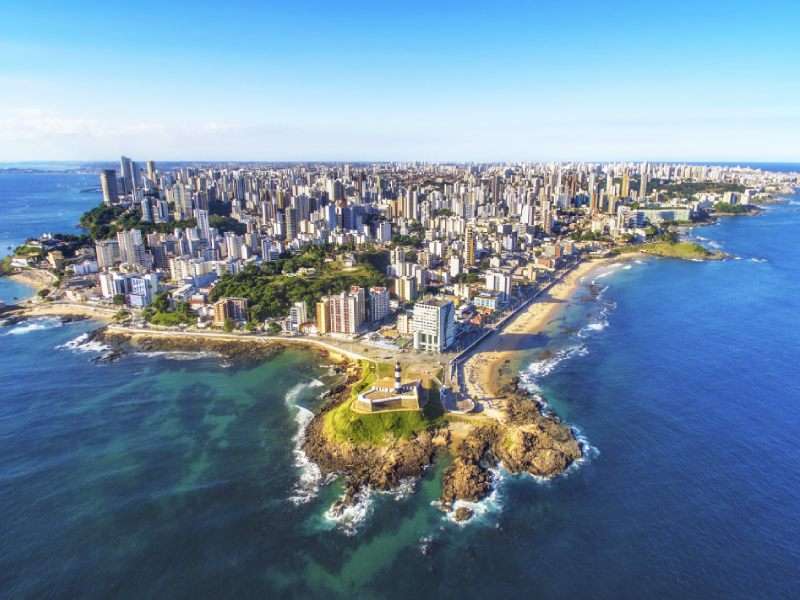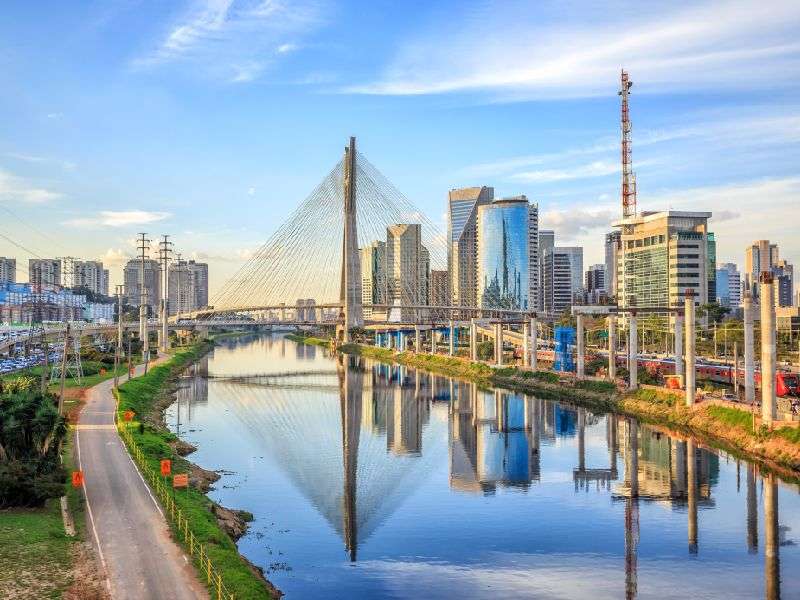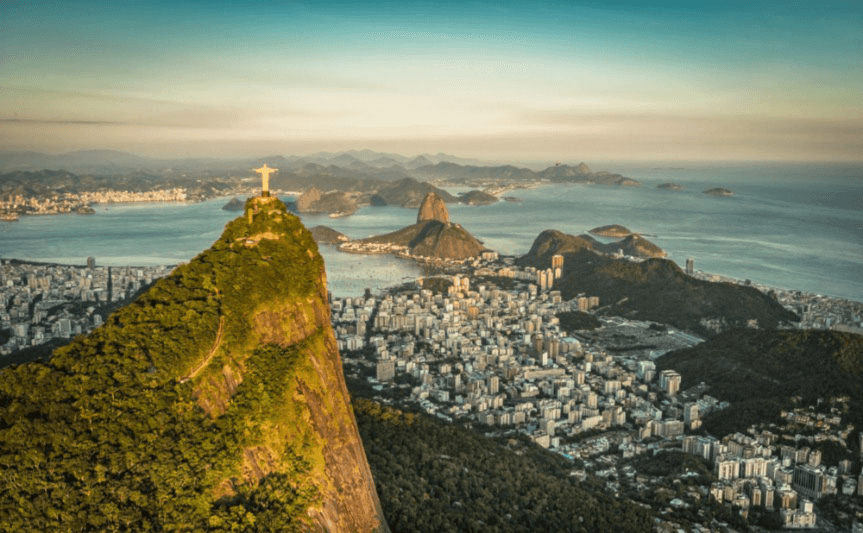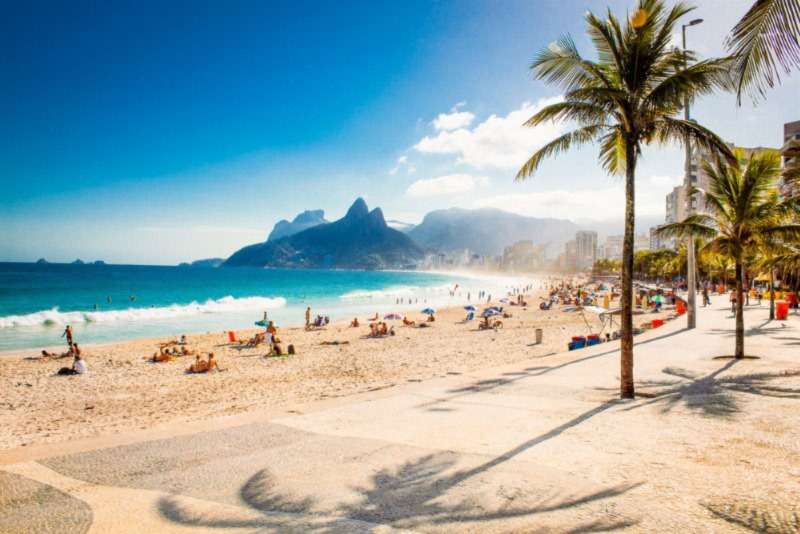
Chapada Diamantina National Park
One of Brazil's most intriguing natural parks is the Chapada Diamantina National Park. The ecosystems found in the mountain vistas are incredibly diverse, ranging from the parched Cerrado to the lush Mata Atlantica to the rocky Caatinga. Bromelia and orchids settle into a friendly habitat and acclimate to the climatic and altitude variations. The jaguatirica (a local wild cat), puma, mocó (a rodent that resembles a rabbit), deer, teius (a lizard), and seriema all find refuge in the mountain, which reaches peaks of 1725 meters.
The pre-Cambrian epoch witnessed the start of the erosion of massive quartz-based rocks, which resulted in the construction of mineral towers known to the local Indians of the Maracas and Cariris tribes—tribes that ruled the area until the first immigrants, or bandeirantes, arrived around 1750. The tallest tepuis, which span the municipalities of Palmeiras, Lençois, and Mucugê, are 1472m (4,830 ft) in height. The Pai Inacio, the Morro Branco do Paty, Calumbi, commonly known as the Morro do Camelo or Camel's Back, and the Tabor hilltop are live memorials and proof of numerous old local stories.
History
The Chapada Diamantina National Park was created in 1985 and is currently undergoing implementation under the direction of the Palmeiras-based Institute for Chico Mendes Biodiversity Conservation.
The local guide groups in the region should be consulted before going on treks inside the park for safety and environmental concerns. Travel agencies, pousadas, hostels, and other organizations that provide community hosting can all suggest equestrian, off-road, canoe, and walking treks. Other attractions include esoteric pursuits like past-life regression and new age, spiritual exploration, and personal growth.
A stark reminder of the wealth of the diamond era that helped make Brazil the first worldwide diamond exporter at the beginning of the 20th century is the abundance of colonial buildings in the villages that surround the Chapada Diamantina National Park. Hikers from all over the world can still enjoy the routes that the garimpeiros (prospectors of valuable minerals who dug by hand) built. Old garimpeiros who experienced and lived during the time of the diamond rush that made the region renowned can still be found. The main rivers in the region originate from the Chapada's hidden rocks. Deep gorges are carved out by the Paraguaçu and Rio de Contas rivers in the surrounding hills and plains, revealing views of breathtaking grandeur, including the Fumaça Waterfall, the nation's highest waterfall at 400 meters (1400 feet), and the Iraguara and Poço Encantado caves.
What to Explore at Chapada Diamantina National Park
Caves and Caverns
The Itaetê region, which is located in the southeast corner of Chapada Diamantina National Park, is home to a number of impressive underground sites. Poço Azul and Poço Encantado are two underground lakes where the sun's rays align spectacularly from September to March. The Poço Encantado is a victim of its own success in that there may be a wait when you arrive at certain times. But it's simpler to get to the Poço Azul, and we can even swim there. It is possible to drive between the two locations from Lençois in a single day, however this may take five hours. Visit the poços during the day and stay the night in the charming village of Igatu for a more leisurely experience.
One of the most significant underground networks in Brazil is made up of the potholing caves, also known as the Speleological Park of the Iraquara, which is close to Palmeiras. Lapa Doce, Torrinha, and Pratinha caves receive the most visitors (usually overflowing with tourists).
Numerous companies in Lençois offer this tour in a single day, which includes a stop at the Pai Inacio mountain peak. However, we advise caution when considering tours that seem appealing on price but run the risk of compromising the experience's quality by taking excessively large groups.

Waterfall in Fumaça
The Fumaça Waterfall is a rare phenomena that produces a majestic and magnificent scenery. The 380 m water fall is the second-highest in the world after Salto Angel in Venezuela. The term "Fumaça" for this waterfall comes from the smoky effect created by the wind catching the water drops as they fall from May to September, when there is less water falling. The diamond prospectors and garimpeiros who settled in the basin of the rivers Capivara, Palmital, Capivari, and Caldeiro in the early years of the 20th century built the trail leading to the waterfall.
To make it easier for cattle moved to the plains to graze during the Serto's dry season to reach the trail, it was partially covered with pebbles. Cattle ranchers frequently cause the sporadic fires that break out in these pastures on purpose, and they have a significant negative influence on the local ecosystem.
The Capo Valley
Between 1860 and 1930, the Capo Valley, 50 km from Lençois, served as a long-term strategic base for diamond explorers exploring the nearby mountains. A new economy based on coffee and banana plantations emerged at the end of the diamond cycle. The valley has steadily changed since the 1980s, when residents from larger Brazilian towns began to move there in search of a more natural lifestyle. The 1990s brought tourism and new opportunities for all the citizens, while other groups engaged in small-scale farming and seeking a spirituality rooted in nature flourished. These groups successfully proposed a variety of courses, from shamanic retreats to natural medicine classes.
Additionally, a larger community movement is presently developing a sustainable development strategy that enables the expansion of the regional economy while protecting the ecological and social harmony of the valley. The theater troupe, the choir, and the Frenchman-run circus school keep the village's evenings lively. Due to the fact that many artists from Brazil, South America, and Europe have decided to reside there, the community has a bohemian vibe and a multilingual culture. Capo Valley now has more than 2,000 residents since the community of Caete-Açu responded to these developments without losing its uniqueness.
Lençois — the Beautiful Nearby Town
There are numerous hotels and vacation companies in Chapada Diamantina's traditional town and capital. We can see the more affluent diamond prospectors wandering around in their linen suits thanks to the colonial architecture and vibrant streets of this place, which give us a taste of bygone times. Particularly on Rua das Pedras, the major retail area where it is simple to find a place to dine or drink in the evening, the buildings have been meticulously renovated and are now home to a range of shops. The main architectural highlights of the city are two catholic churches, the structure of the former vice-consulate of France, and the stunning Garimpo Museum.
There are numerous outdoor activity and extreme sports specialists, as well as holistic doctors and massage therapists, who have established in Lençois and work out of artisan workshops. The "Associaço Graus de Luz e Griô" manages a program for locals from underprivileged backgrounds that promotes the arts, and it has won multiple accolades from UNESCO and other international organizations. Additionally, Lençois has computer classes, handcraft workshops, and a thriving culture and development center that is definitely worth seeing.
When to Visit
Generally speaking, May to September are the best months to visit Chapada Diamantina because the weather is drier but still pleasant during the day. Typically, October is the hottest month and is regarded as the start of the rainy season. If you want to a rain free adventure, then may to September is an ideal period. However, if you don't mind the weather or want to experience it all, then you choose anytime of the year.

related tours

4 Sides of Paradise in Brazil
12 Days / 11 Nights
From
$ 980

São Paulo in three days
3 Days / 2 Nights
From
$ 215

Wonderful Rio de Janeiro
10 Days / 9 Nights
From
$ 871

Sun and Flavors
13 Days / 12 Nights
From
$ 1055
